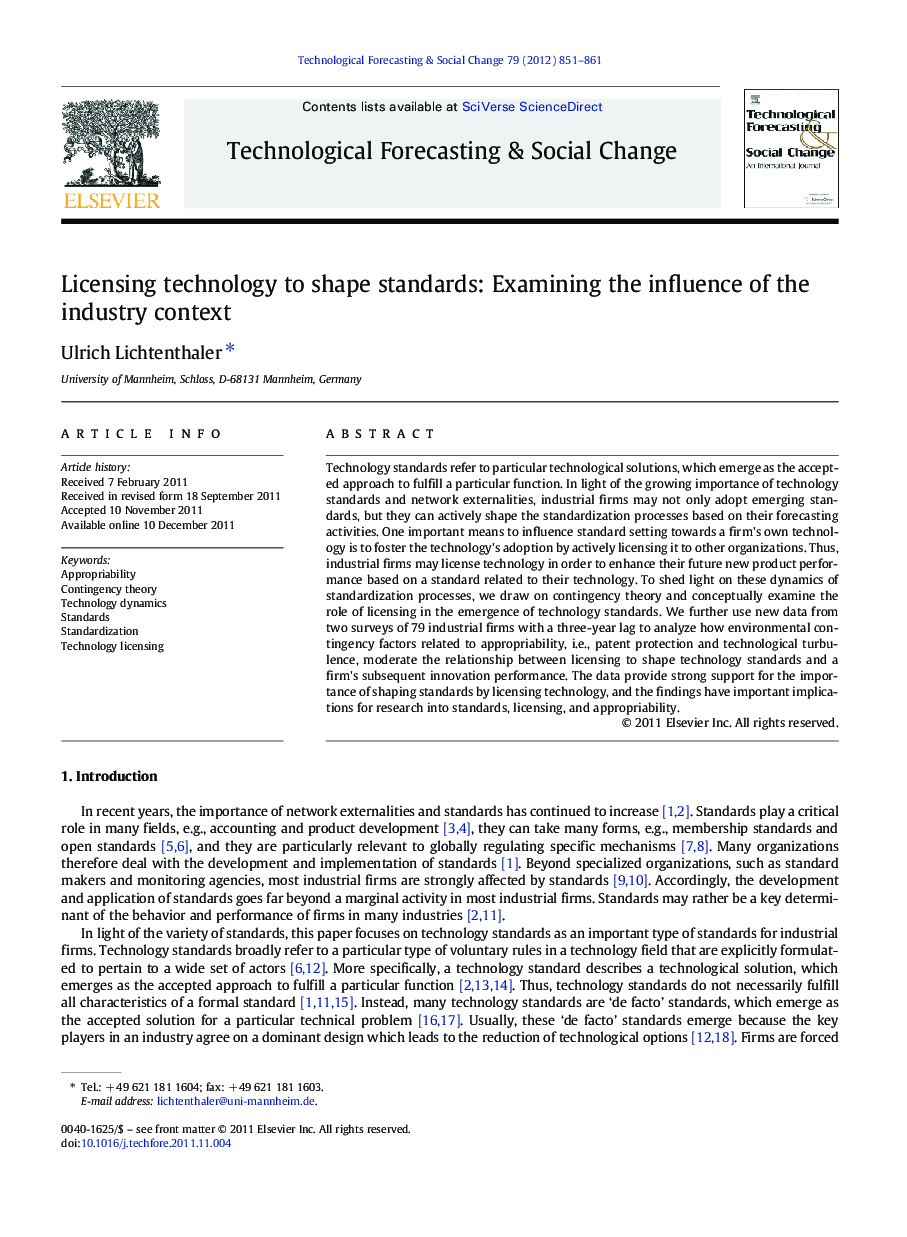| Article ID | Journal | Published Year | Pages | File Type |
|---|---|---|---|---|
| 896684 | Technological Forecasting and Social Change | 2012 | 11 Pages |
Technology standards refer to particular technological solutions, which emerge as the accepted approach to fulfill a particular function. In light of the growing importance of technology standards and network externalities, industrial firms may not only adopt emerging standards, but they can actively shape the standardization processes based on their forecasting activities. One important means to influence standard setting towards a firm's own technology is to foster the technology's adoption by actively licensing it to other organizations. Thus, industrial firms may license technology in order to enhance their future new product performance based on a standard related to their technology. To shed light on these dynamics of standardization processes, we draw on contingency theory and conceptually examine the role of licensing in the emergence of technology standards. We further use new data from two surveys of 79 industrial firms with a three-year lag to analyze how environmental contingency factors related to appropriability, i.e., patent protection and technological turbulence, moderate the relationship between licensing to shape technology standards and a firm's subsequent innovation performance. The data provide strong support for the importance of shaping standards by licensing technology, and the findings have important implications for research into standards, licensing, and appropriability.
► Industrial firms may actively shape technology standardization processes. ► Standards may be influenced by licensing technology to other firms. ► Patent protection eases licensing to shape standards. ► Technological turbulence eases licensing to shape standards.
